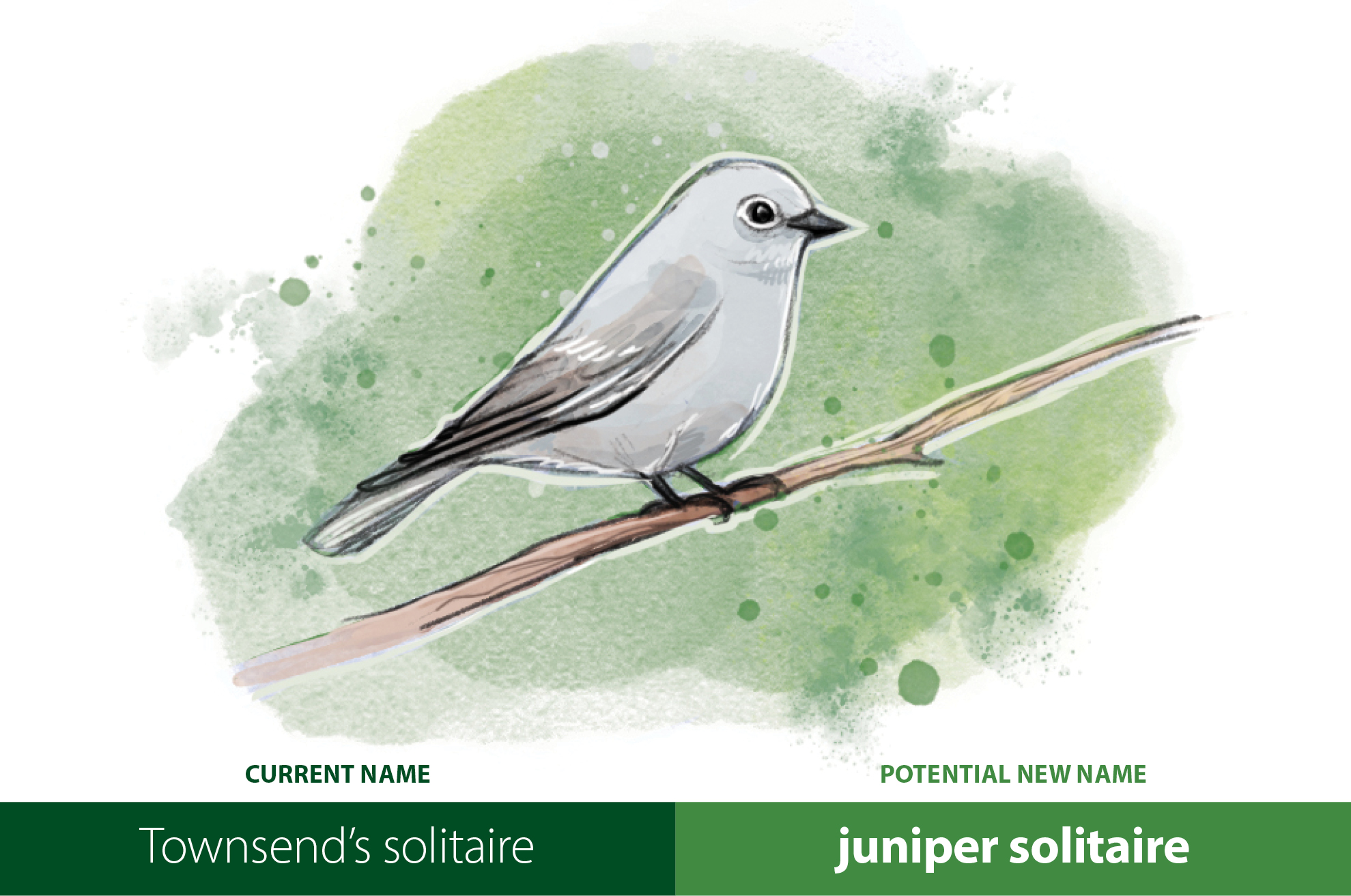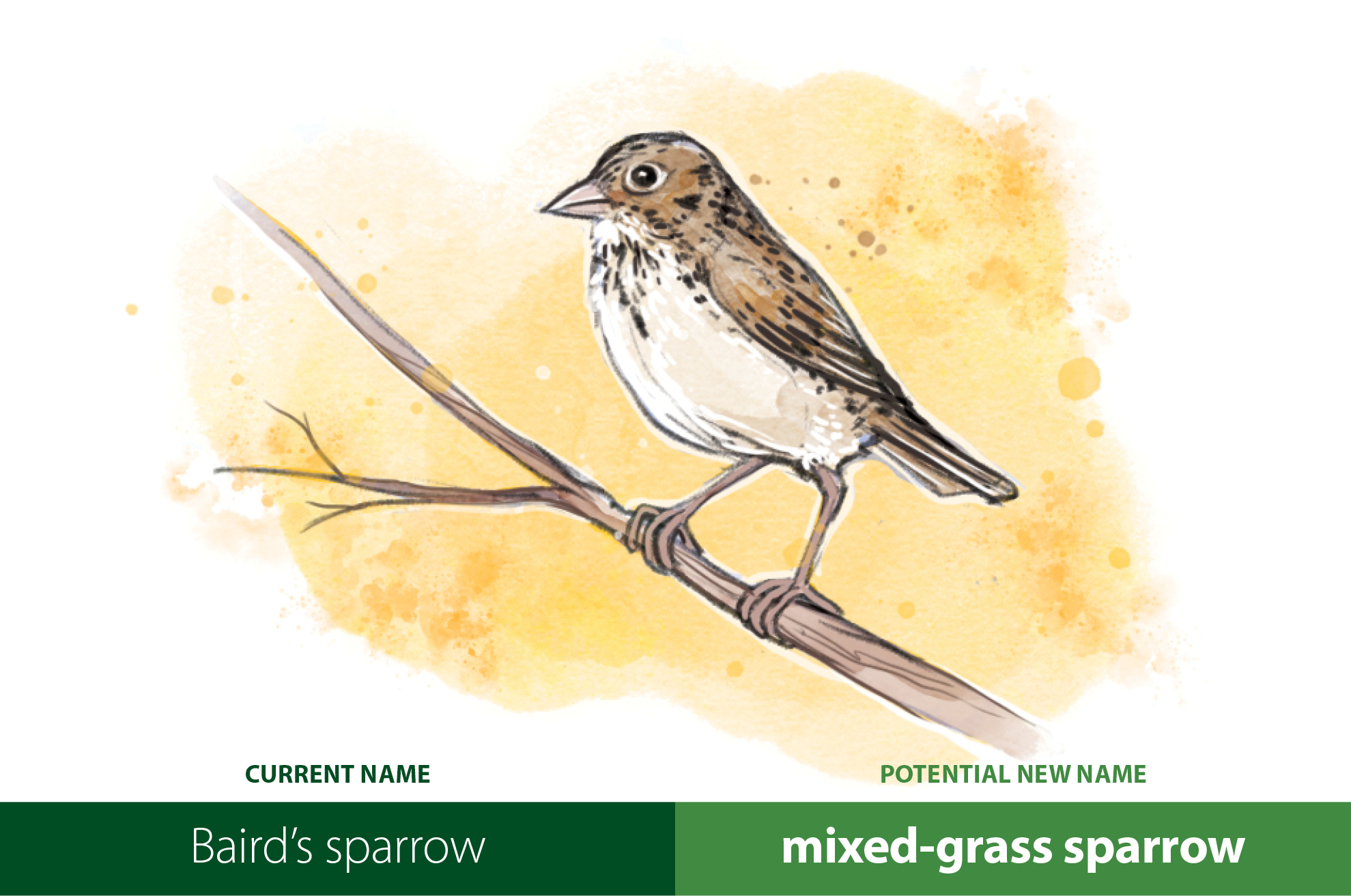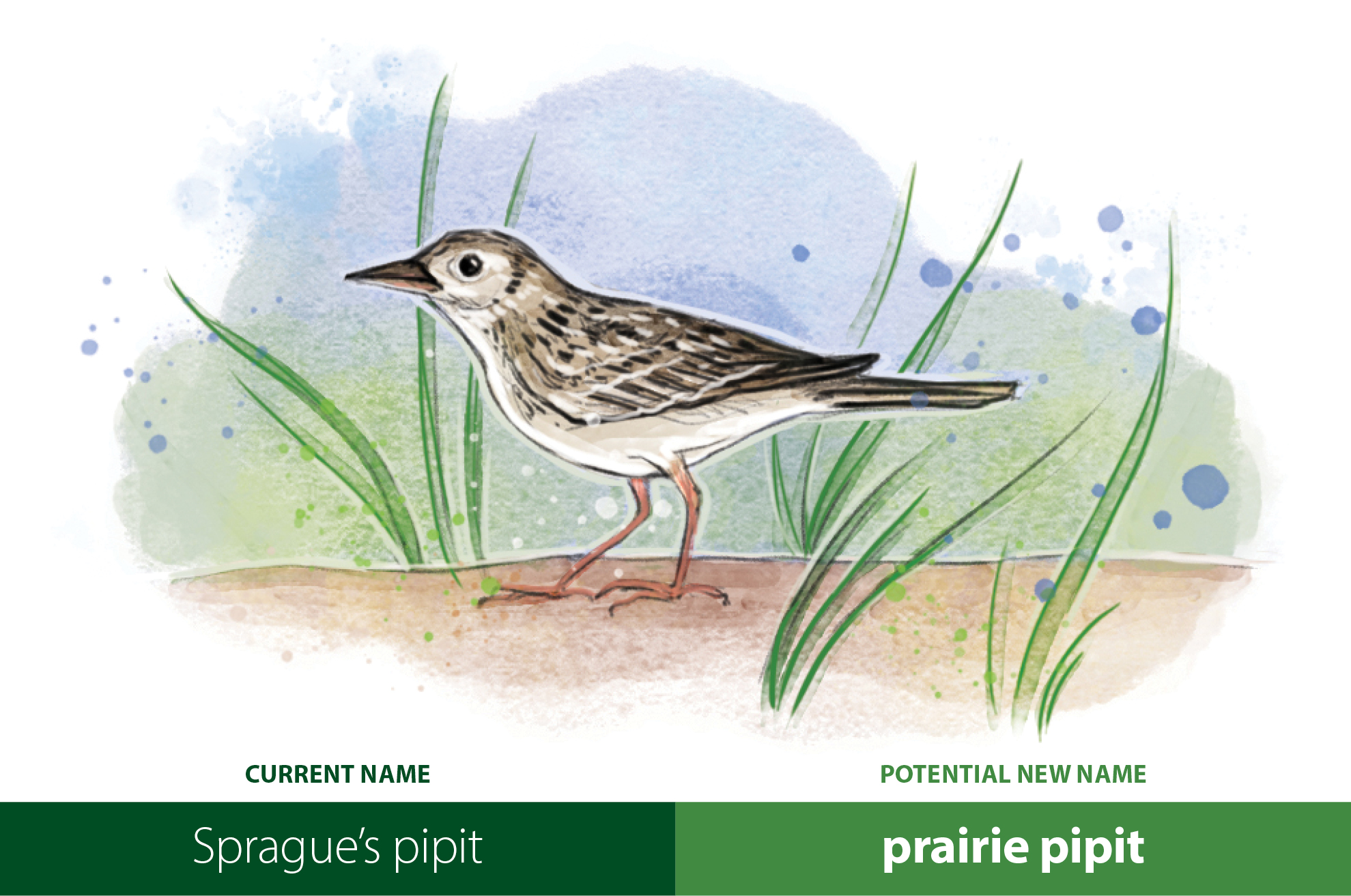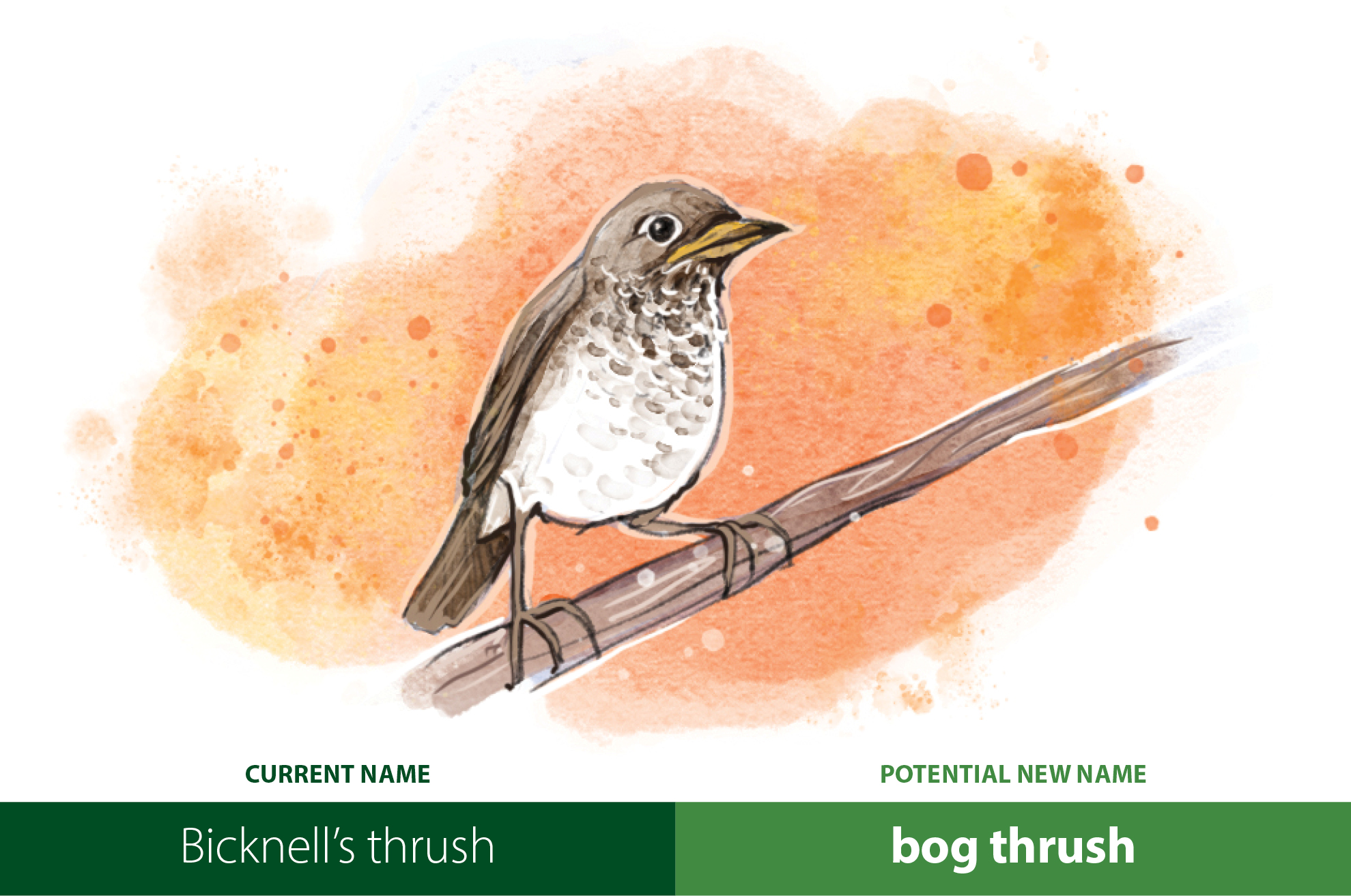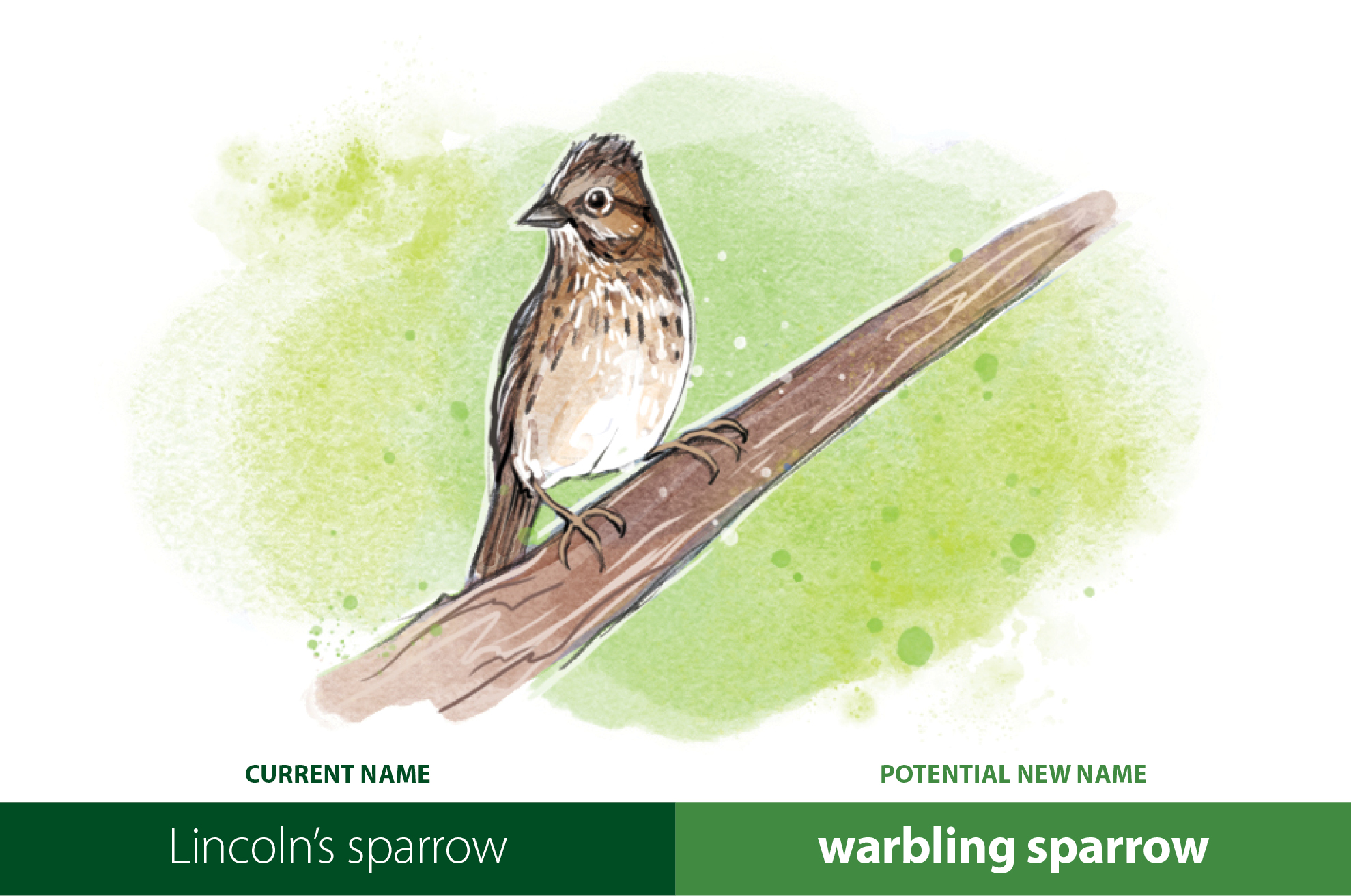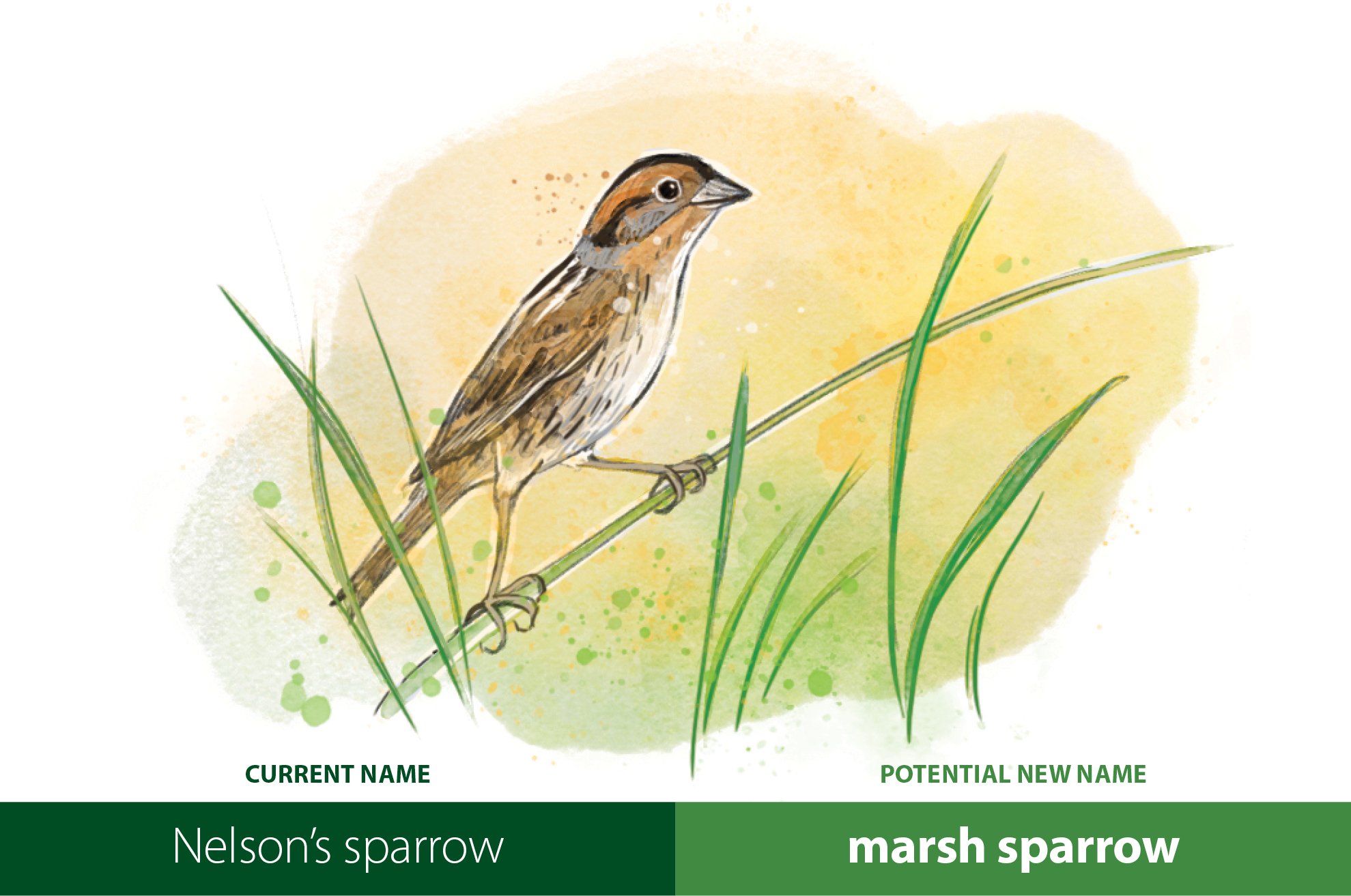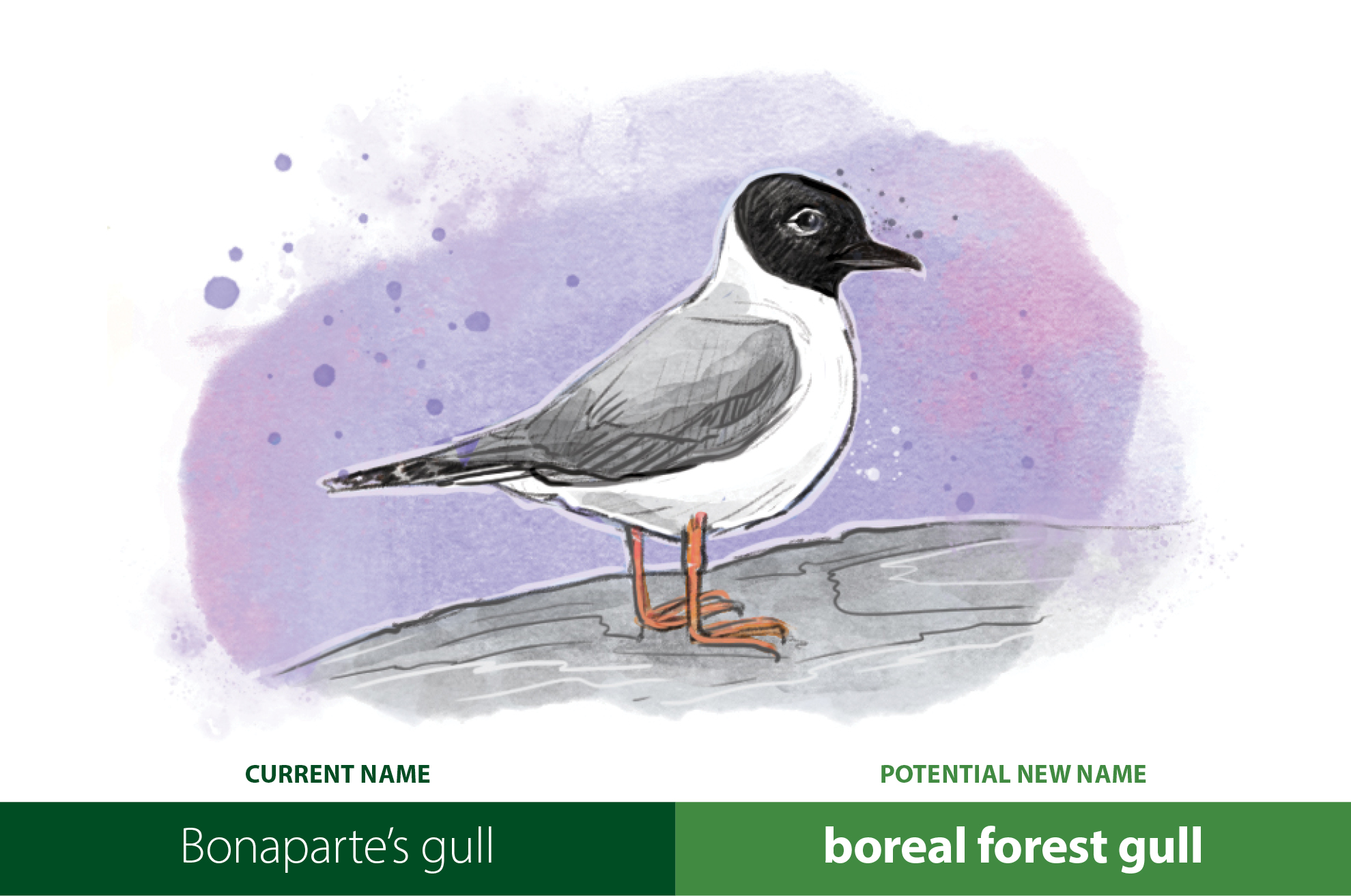Coast to coast
What’s in a name?
Migrating birds will soon be returning to Canadian skies. Let’s pause and think about what their names mean (page 4).
Recently, the American Ornithological Society (AOS) decided to rename birds named eponymously or that are currently named using offensive or derogatory terms. The effort has also been heralded as a great way to better reflect birds’ appearance, behaviour or habitat needs, essentially giving birds names that celebrate them for what they are. Renaming birds may also remove a barrier felt by people who have suffered from Western colonialism, hopefully going some way toward making birds, birding and the natural world more accessible and a safer place for individuals and communities who have suffered under systemic exclusion and racism.
Here are some of our suggestions for possible new names.

